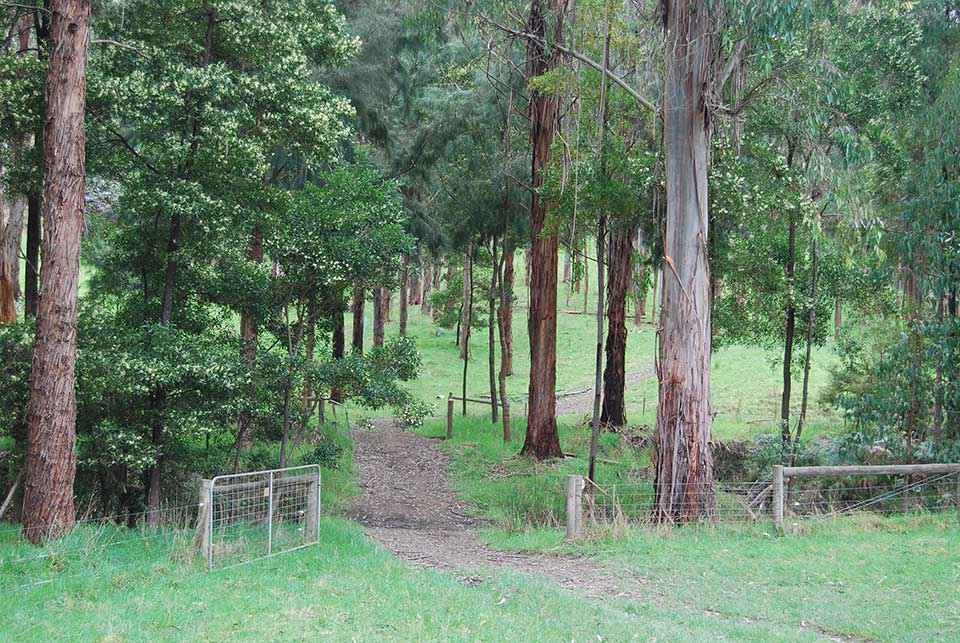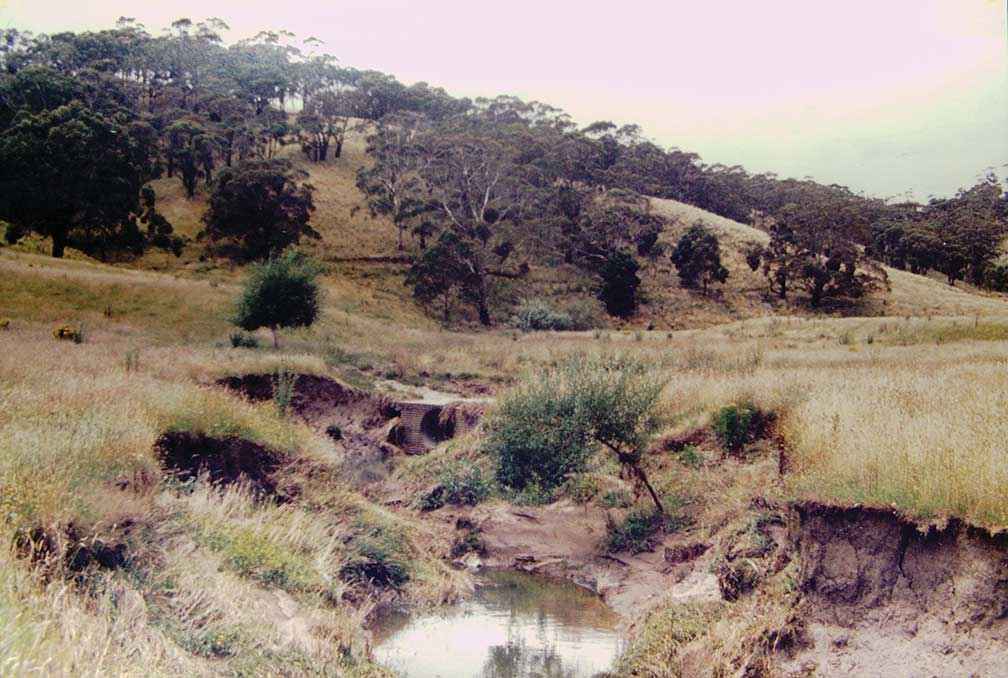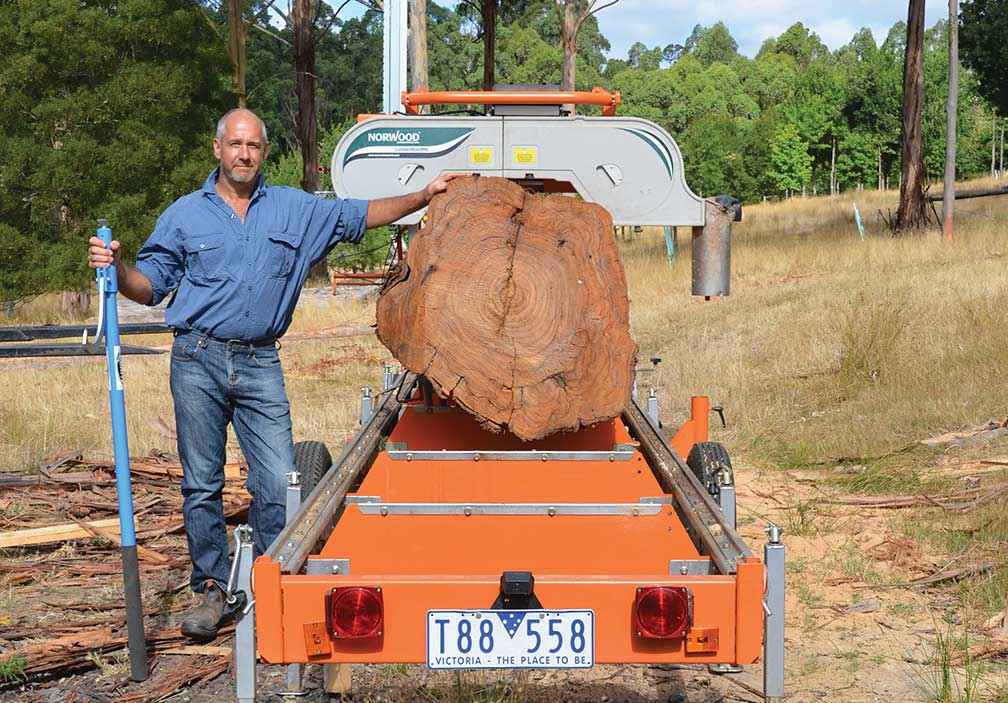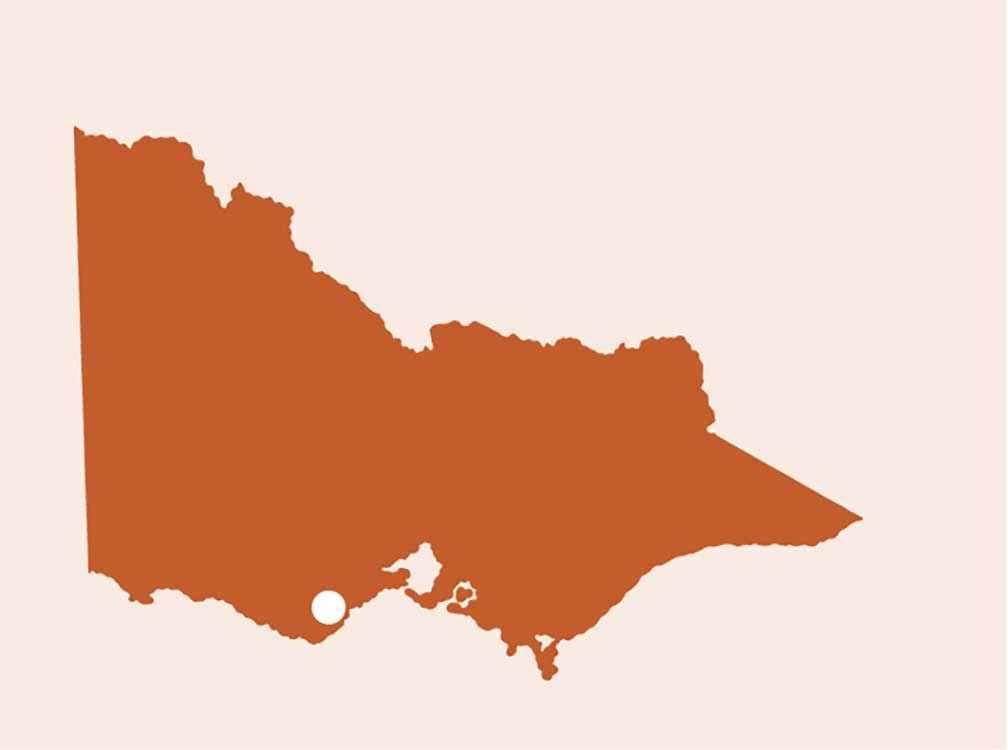Victorian Landcare Magazine - Summer 2018, Issue 71

At the start of our farm tours I stand on a tree stump just a few metres from the creek that divides our property. The eucalypt was more than 80 centimetres in diameter when I felled it and milled out more than a cubic metre of knot-free, furniture-grade timber from the pruned butt log. I planted the tree, a native, though not indigenous to the site, in 1987, when I was 25 years old.
Back then, the creek was an eroded drain with cattle climbing up and down the banks. We fenced out the creek and planted a mix of native trees and shrubs, just like a conventional Landcare planting. The difference was that I always intended to harvest the trees for timber. Just a few years after planting I began thinning to give the best trees more growing space and then pruned them up to more than six metres to improve their wood quality. We are now selectively harvesting sawlogs and milling them on our portable bandsaw and drying the timber in a solar kiln.
Over the next decade, I plan to remove all the eucalypts leaving the understorey of high value native cabinet timbers (not the understorey shrubs) to grow into a second-generation crop. These include our local blackwood and satinwood, but also more climate-change adapted species from New South Wales including silky oak, sheoak and Australian red cedar. The eucalypts grow too tall, compete with the adjacent pastures, and are increasing the fire risk.
My riparian forest, like any native forest, is dynamic. Rather than just let nature take its course I am guiding its growth so that it transitions, more quickly than it might otherwise, from a eucalypt-dominated sclerophyll forest into a dark, water-cooling, rainforest of specialty timbers.
"Over the next decade, I plan to remove all the eucalypts leaving the understorey of high value native cabinet timbers (not the understorey shrubs) to grow into a second-generation crop."

Above: The eroded creek in 1987.
The reaction to this project has been fascinating. Many commercial foresters say my example is too complicated, too expensive and lacking the efficiencies of scale and uniformity that they strive for in their own plantation models. On the other hand, many conservationists view any form of timber harvesting from Landcare plantings as a negative. But for the farmers who visit, it is just common sense to manage waterways on farms for both conservation and profit.
What single-interest observers don’t appreciate is that a forest that is neither the best for production or conservation might actually be better for both. Between the two extremes – a conservation planting of indigenous plants and an intensive monoculture plantation – there are myriad options that provide a mix of conservation and production. While we don’t know exactly how these multipurpose options will play out on every farm, there is much that is intuitive.
For example, close to the conservation-only end of the continuum there might be the opportunity to harvest some firewood without having any negative impact on biodiversity or water quality. In our case, although I may have compromised the conservation ideals by planting non-indigenous native trees, I believe that our active management is enhancing biodiversity and water quality over and above what might be achieve by a conventional Landcare planting.
I invite my visitors to look for signs of the ecological processes playing out in our managed riparian forest. The trees I killed by ringbarking are left standing to enhance biodiversity. Those I felled are providing large wood debris on the ground and in the creek itself. Visitors can see how the logs are pushed up into heaps during floods creating a series of natural beaver dams that slow the water flow. These provide deep pools, organic matter and wildlife refuges – aquatic habitat elements that have been largely missing since our farm creeks were cleared, de-snagged and turned into open drains by the previous owners of the property.

Above: Rowan Reid with a 25-year-old eucalypt log on the bandsaw.
Looking only at this one site misses the real potential of multipurpose riparian forestry on farms. In our region alone, the prospect of a commercial return, however small, from trees planted primarily for conservation has encouraged many farmers to fence out their creeks wider than they might otherwise and plant trees, thereby amplifying the conservation benefits across the landscape.
These self-funded, private plantings do not rely on government grants. Although not perfect for conservation they are playing a significant role in trapping sediments and nutrients that would otherwise enter the streams, locking up carbon, and providing corridors for the movement of native animal and plant species, and their genes.
Rather than being a conservation threat, I see the active management and harvesting of trees from multipurpose farm plantings as an exciting new chapter in the development of Landcare. The greatest threat to realising these opportunities is the inflexibility of government and interest groups who – through their planning, practice codes, grant conditions or advice – perpetuate the misconception that forests should only be grown for conservation or profit, and never both.
Rowan Reid is a forest scientist and landholder with a 42-hectare property at Bambra, who helped develop the Otway Agroforestry Network. His latest book is Heartwood: The art and science of growing trees for conservation and profit.
For more information go to www.agroforestry.net.au
"My riparian forest, like any native forest, is dynamic. Rather than just let nature take its course I am guiding its growth so that it transitions, more quickly than it might otherwise, from a eucalypt-dominated sclerophyll forest into a dark, water-cooling, rainforest of specialty timbers."
Above: The big trees of Bambra Agroforestry Farm at 28 years
Above: Bambra Agroforestry Farm Drone tour

Above: Location of Bambra, near the Otway Ranges.